Inbound marketing can have an immense impact on how you generate leads.
What’s different about inbound marketing?
It focuses on attracting customers to your business rather than pushing messages out to them.
Mobile vet service, BetterVet, demonstrates the power of this approach.
BetterVet doubled down on SEO by publishing A LOT of helpful content to help folks care for their pets.
Like this:
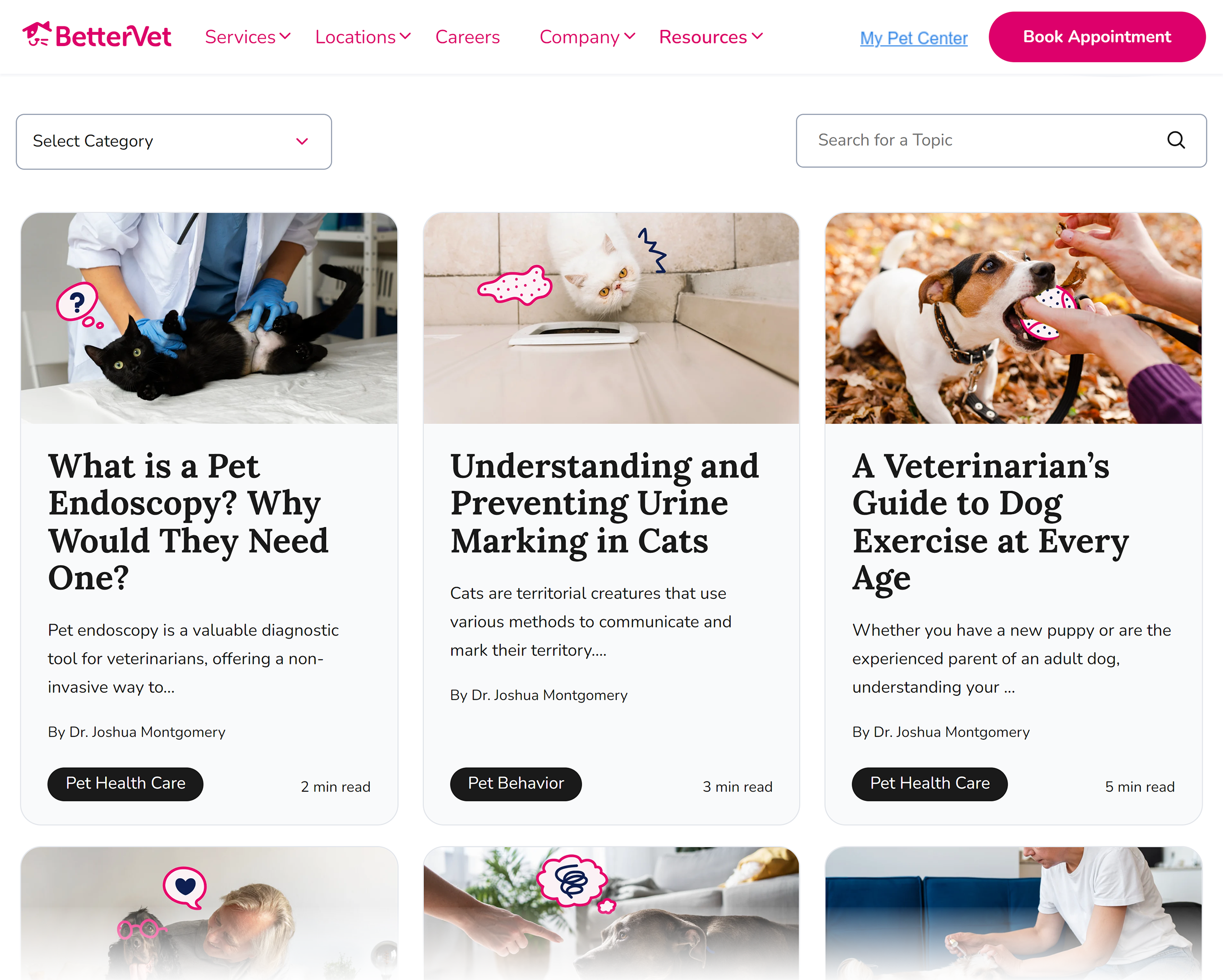
The effort paid off.
BetterVet’s organic traffic has exploded:

Want to learn how inbound marketing can boost your business?
You’re in luck.
Today, you’ll learn key strategies to add to your marketing mix and see successful case studies for inspiration.
Inbound vs. Outbound Marketing
Should you focus on inbound or outbound marketing?
Backlinko is biased toward inbound, but you could benefit from using both methods.
Here are the differences:
| Inbound Marketing | Outbound Marketing | |
|---|---|---|
| Method | Pull: Attract customers organically by creating content they value | Push: Push general messages out to a broad audience |
| Content Examples | Blog posts, articles, social media updates, email newsletters, ebooks, whitepapers, webinars, infographics, videos, podcasts | Digital advertisements, email blasts, TV commercials, billboards, direct mail, cold calls |
| Cost | Generally more cost-effective in the long run due to lower customer acquisition costs | Can be expensive due to the high cost of advertising |
| Ideal For | Attracting fewer, but more highly qualified leads | Reaching a larger, broader audience quickly |
Why Inbound Marketing Is So Effective
What’s so special about inbound marketing?
Simple: It works.
Here are the top four benefits of inbound marketing:
#1: It Attracts Qualified Leads
Inbound marketing acts like a magnet for high-quality prospects.
How?
Your audience comes to you with hands raised for something. They could be downloading a resource, signing up for a webinar, booking an appointment, or buying your product.
Point is: These are people willing and ready to engage with your business.
And it’s effective.
Inbound marketing produces 54% more leads than traditional outbound does.
And costs 62% less.
That means you’re spending less money and effort on your marketing. And you’re less likely to target people who aren’t interested in your products or services.
Just look at Sess Lee Cannon. She brings in over $1 million a year for her local hair salon in Texas.
She relies primarily on social media, creating content for people interested in taking better care of curly hair.
Like this:
View this post on Instagram
With valuable content like this, leads qualify themselves.
How so?
The most interested viewers are the ones most likely to visit the salon’s website.
Just look: This salon got an average of 2,100 page views per month in Q2 of 2024. All from social media!

#2: It Improves Customer Experience
A good inbound marketing strategy gives customers a great experience.
How?
You provide content and experiences that deeply resonate with your audience. You address their needs, challenges, and preferences.
They have a positive experience as a result. And they’re more likely to stay loyal to your brand.
Look at what PureGym is doing.
The company offers free exercise guides to any user. Whether they have an active PureGym membership or not.
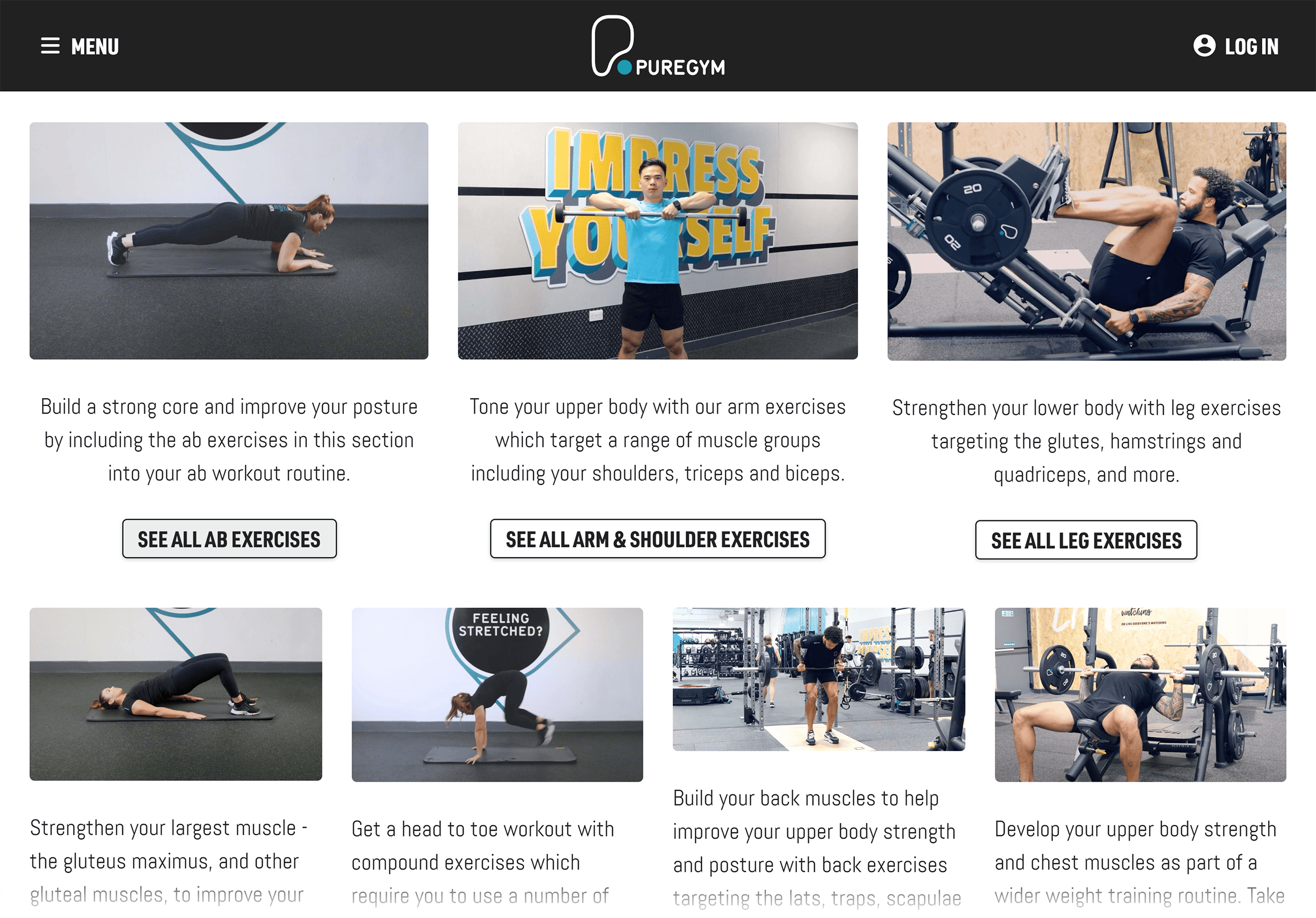
People looking for new workout programs are naturally attracted to that content.
They have a positive experience getting that content for free.
And by creating it, PureGym gets the attention of a target audience that’s a perfect fit for their brand.
#3: It Builds Trust and Credibility
When you provide value to your audience consistently, your brand becomes a trusted resource.
Why?
People start to see you as an expert they can rely on when they need industry-related insights and solutions.
Take Backlinko, for example.
We publish roughly 50 articles per month about SEO and online marketing.
People trust us. And they come back for more.
It’s evident in our analytics.
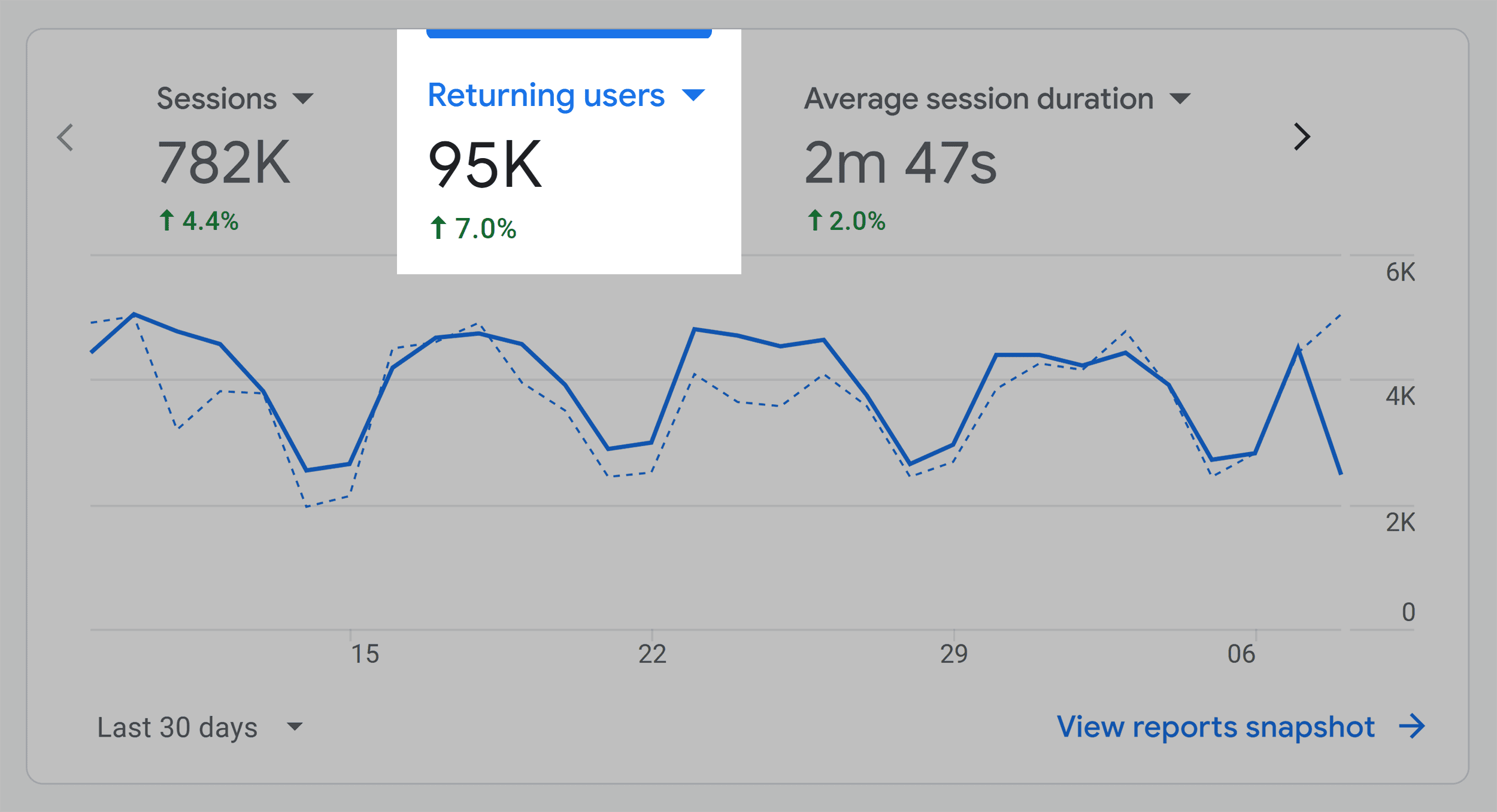
Over time, this kind of trust naturally translates into stronger customer relationships.
And, ultimately, increased business.
#4: It Has Long-Term Impact
Want to publish a piece of content that generates leads for months or even years after it goes live?
Inbound marketing can do that.
Assets like blog posts, videos, and ebooks can have lasting power.
For example, Nourish Move Love published a detox tea recipe back in 2016.
Even years later, that single piece of content still draws a consistent flow of visitors to the company’s site:
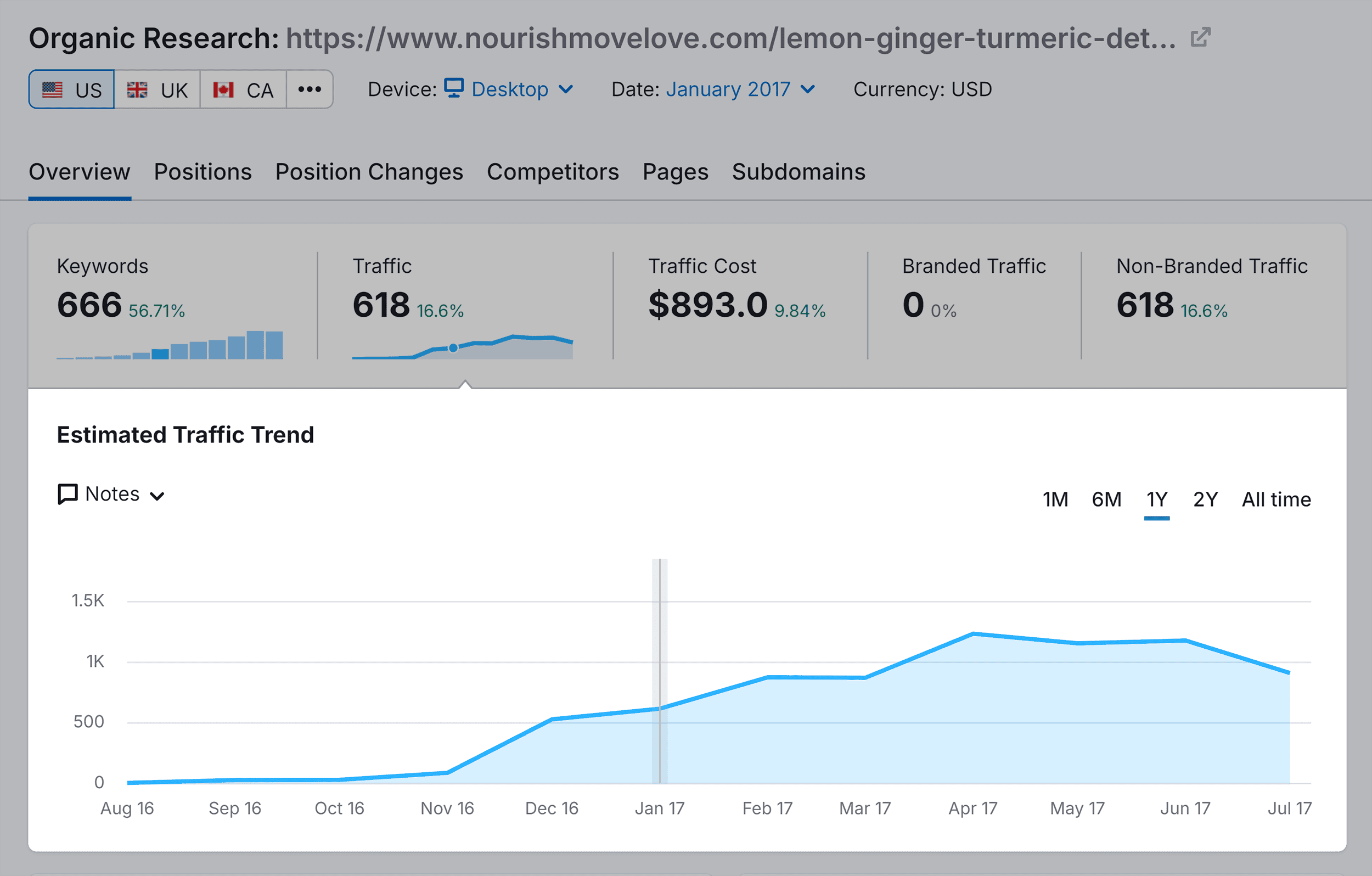
This kind of evergreen content keeps working for your business, delivering value that extends far beyond initial publication.
4 Proven Inbound Marketing Strategies
But how do you do inbound marketing?
Here are four of the best strategies:
#1: Content Marketing
A key part of inbound marketing is content marketing.
By providing valuable information that’s directly relevant to your target audience, good content acts as a magnet to attract ideal customers.
By consistently distributing valuable content, you:
- Increase brand awareness
- Generate leads
- Nurture existing customers
But you’ll need different kinds of content to achieve these goals. Let’s review.
Increase Your Brand Awareness
Let’s say you have a fashion blog. Or a boutique selling clothes.
A blog post like “10 Fall Fashion Trends to Watch in 2024” could increase brand awareness.

Imagine a user wants to explore fall fashion trends.
They find your article on Google.
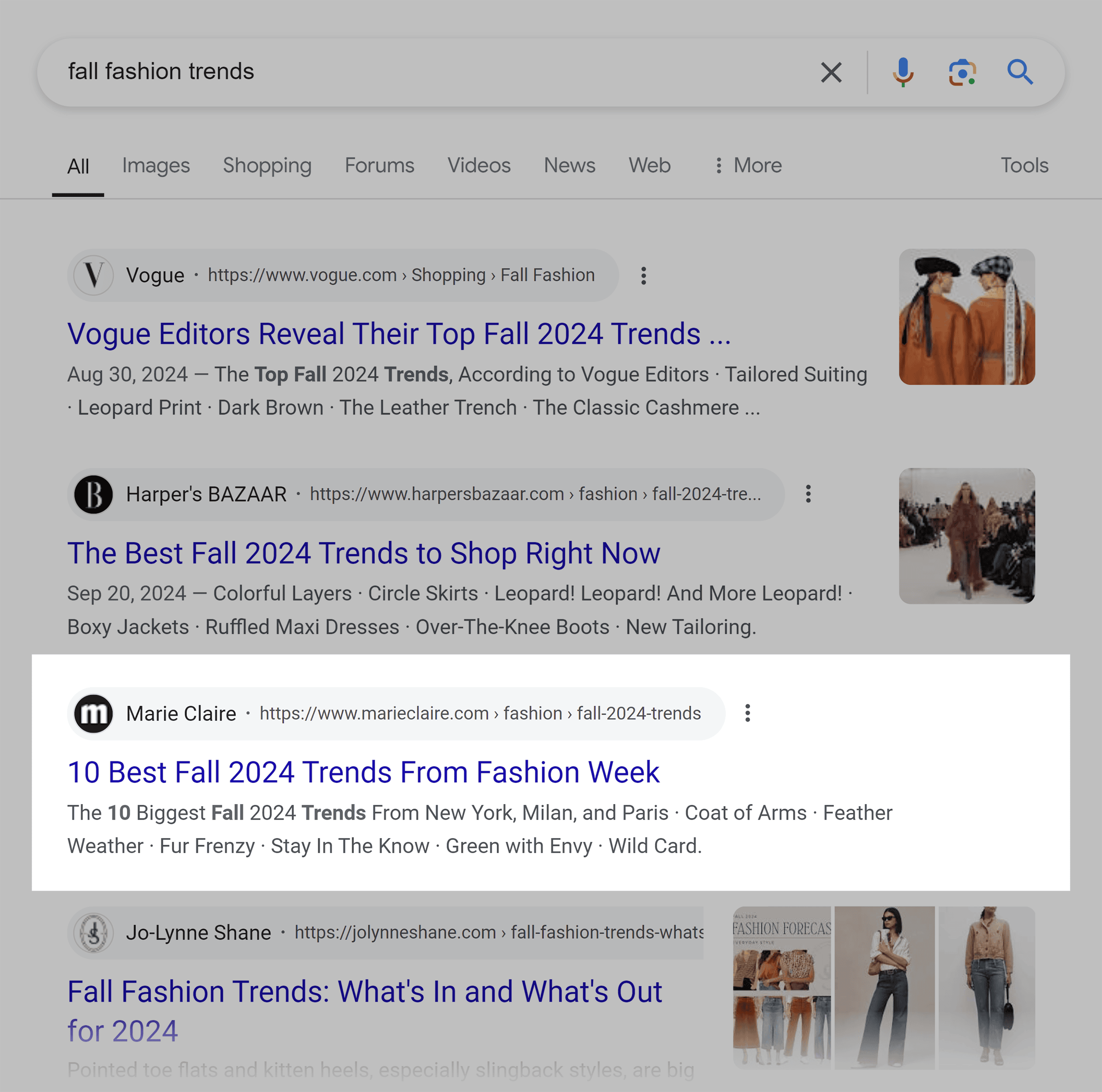
They read it.
They like it.
Now they’re a fan of your brand.
They’re also more likely to explore your website. And better yet, they’re more likely to become a customer.
Look at the stats for “10 Best Fall 2024 Trends From Fashion Week.” It ranked 3rd in the results for the keyword “fall fashion trends.”
That post organically attracts hundreds of prospects each day:

That’s a lot of new eyeballs on your site!
Generate Leads
Create gated content to capture leads.
Do this by taking content that’s especially high value and putting it behind a signup form.
Users can only access it if they provide their contact information first. Usually, their name and email address.
Like this:

Ebooks, webinars, online courses, templates and checklists, industry reports, and exclusive content are all popular options for gated content.
Why?
Because they’re so high value. People are happy to trade their information for access to it.
Anosmic Kitchen does with their ebook:
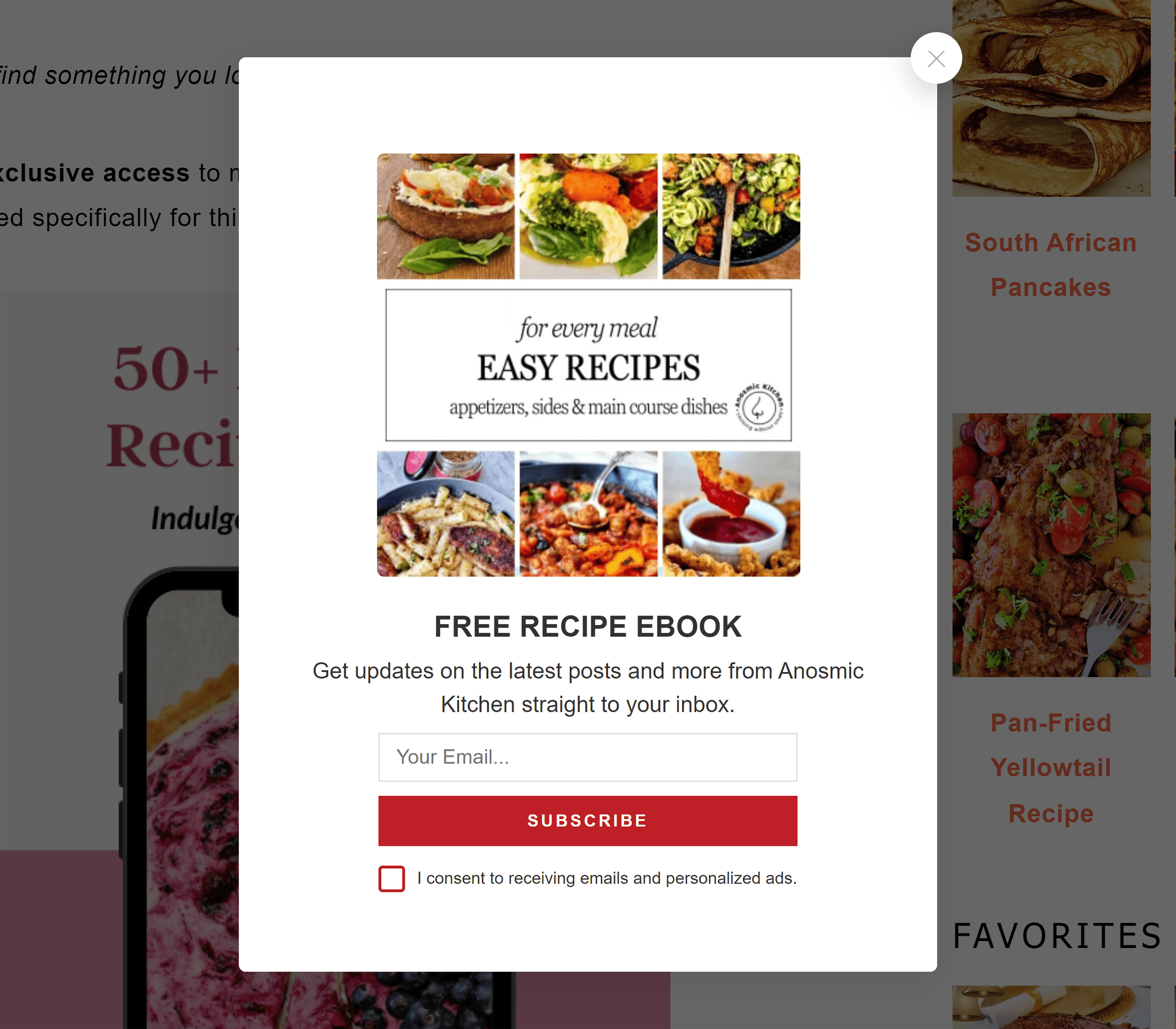
Downloading a free ebook is easy for your visitor. And they get immediate value without any commitment to a purchase.
In return, you get an ideal customers’ email address.
Now you can run email campaigns to bring that subscriber even more value.
Say, by sharing the new articles you publish on your blog, recommending your subject-specific supplies, or even introducing your own products or services.
They get resources they love. You’re likely to get a customer.
It’s a win-win situation.
Further reading: 15 Effective Lead Generation Strategies (+ Best Practices)
Nurture Existing Customers
Inbound marketing is also great for nurturing your existing customers.
Why remarket to people who already bought from you?
So that they’ll come back to purchase more.
Afterall, more sales = more revenue.
But how do you do it?
Start by segmenting your existing customers.
Here’s why:
Different groups of customers share certain similarities. They have unique wants and needs.
When you segment your audience, you can provide messaging and content that’s attuned to them specifically. That way, it’ll work better.
For example, separate loyal customers into a “VIP” or “repeat customers” group. Offer them exclusive deals via email as a reward for their loyalty to your brand.
L’ange (a business that specializes in hair products) does this.
Look at this email:
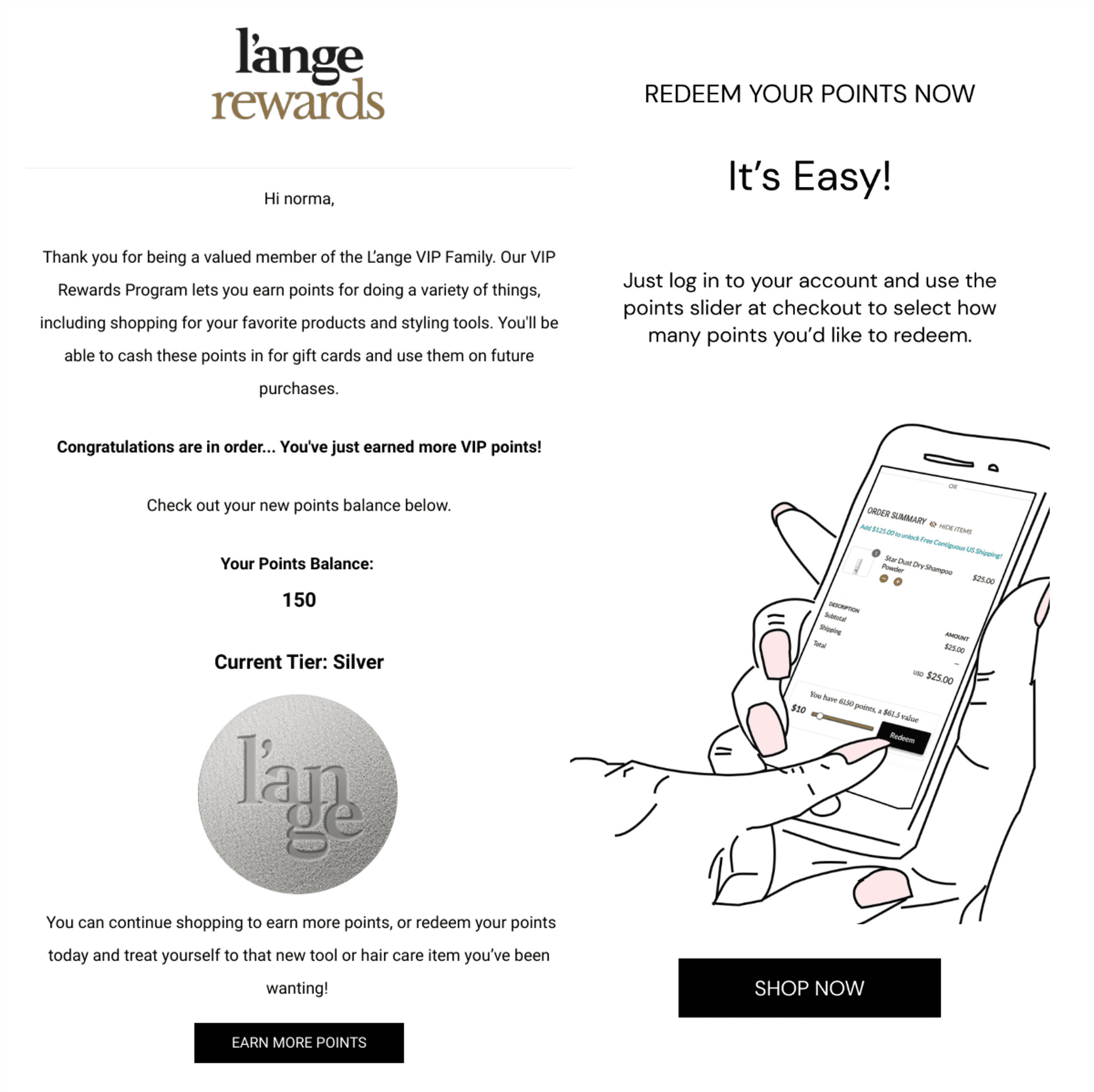
L’ange made repeat customers feel valued. And they offer rewards to motivate more shopping.
It’s also helpful to create a segment for new customers.
They might need more educational content to get started with your product or service.
For instance, Framebridge (a company that sells frames) teaches customers how to hang their art:

This type of content helps new customers feel confident in their purchase.
And it helps them feel like they matter to your brand.
Basically, it builds trust and increases the likelihood of future purchases.
#2: Search Engine Optimization (SEO)
SEO helps make your business more visible on search engine results pages (SERPs).
With SEO, you attract potential customers who are actively searching for products or services like yours.
At Backlinko, we’ve honed our SEO strategy.
We consistently rank for highly competitive keywords.
It’s an inbound strategy that brings substantial organic traffic to our site.
We currently generate around 550,000 monthly visits with SEO.
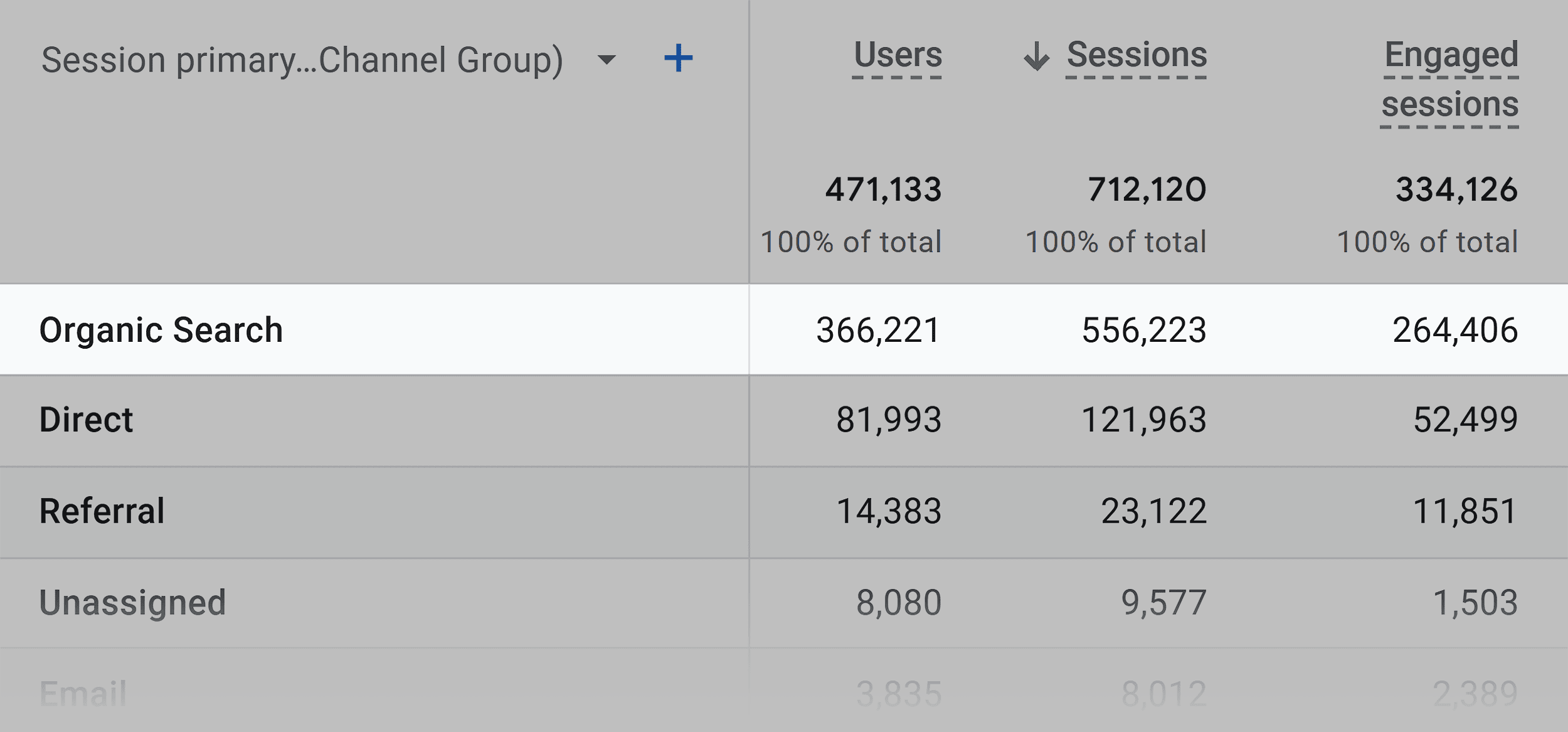
And a whopping 381 of our keywords rank in the top three search results; 535 rank in the top 10.

But how do you make an effective SEO strategy?
Especially if your website is fairly new?
Here’s what to focus on:
1. Finding Your Target Keywords
Do keyword research to find the terms and phrases that your target audience is searching with.
Incorporating those keywords into your content can earn you higher search rankings. Better rankings mean more traffic for your site.
Keyword research takes a few steps.
Start by listing topics and terms related to your business and your industry.
Think like your ideal customer.
What questions might they have? What words would they use?
Write your ideas down in your notes, Excel, or Google Sheets.
Next, use a keyword research tool to expand your list, check search volume, and assess competition.
Let’s say you have a small bakery specializing in vegan baked goods.
You might start with keywords like:
- Vegan bakery
- Vegan cakes
- Vegan cookies
- Vegan pastries
These are your seed keywords.
Next, use a tool like Semrush to expand on these ideas and find more specific, long-tail keywords with less competition.
Let’s walk through it.
Open the Keyword Magic Tool and enter the seed keyword “vegan cookies.”
If you want, enter your domain to get personalized data based on your website.
Click “Search.”
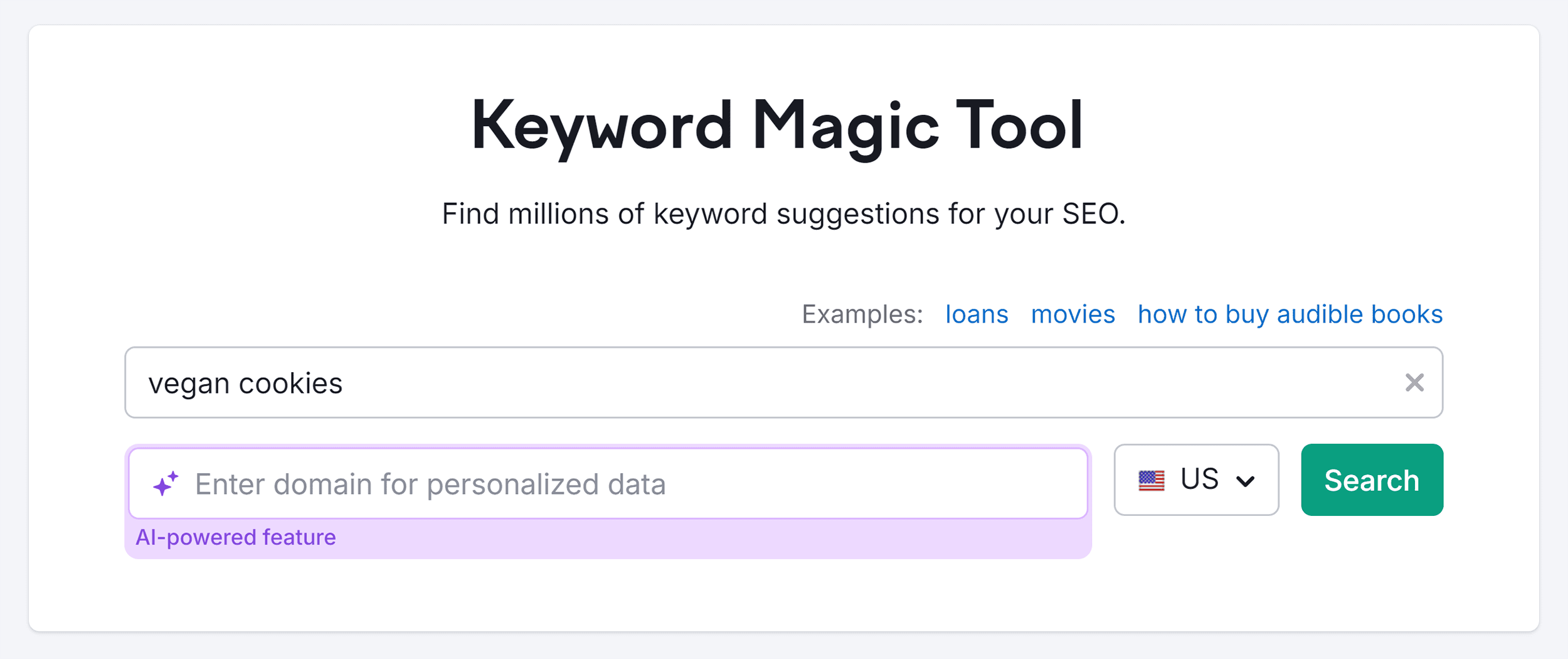
The tool will show you a list of search terms related to your seed keyword.
Alongside each keyword, you’ll also see:
- Search intent: The motivation behind the search
- Search volume: The estimated number of times a keyword is searched in a month
- Keyword difficulty: How difficult it would be to rank for that keyword (the lower the percentage, the easier it is)
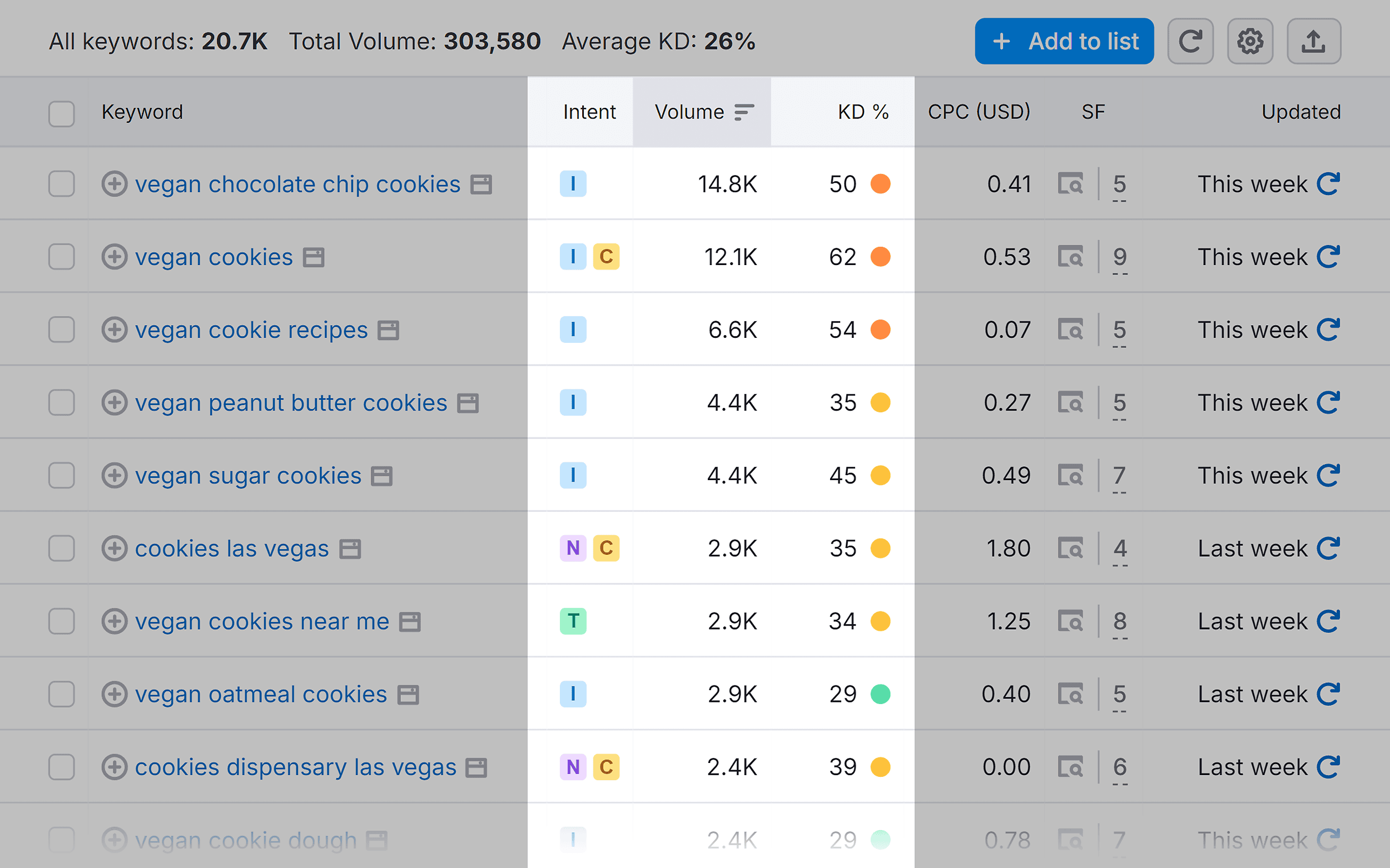
Look for keywords that align well with your content and your audience’s interests.
A high-volume keyword with low competition is an ideal target.
Highly competitive keywords can be helpful too, but they require more significant SEO efforts and time to rank.
Select the keywords that you’d like to include in your SEO strategy and click “+ Add to keyword list.”
You may need to create your first keyword list by giving it a name. Then click the green check mark.

Navigate to the Keyword Strategy Builder from the left-side Semrush menu.

Click your list under the “Keyword lists” section.
Here, you’ll see all the keywords you saved.

2. Providing Value in Your Content
For the next step, write content that resonates with your audience. Include your target keywords, but zero in on providing value.
Why?
Because Google prioritizes content that demonstrates experience, expertise, authoritativeness, and trustworthiness (E-E-A-T).
The algorithm rewards websites that show value with higher rankings.
To create content with high E-E-A-T:
- Offer unique insights: Share first-hand experiences. Or interview people with specific expertise.
- Back up your claims: Include credible data and citations from reputable sources
- Prioritize clarity and structure: Break down complex ideas into digestible chunks. Use headings and subheadings. Above all, make sure the content on the page is easy to understand.
Further reading: E-E-A-T Evaluation Guide: 46-Point Checklist to Guide You
Start your keyword research
Explore the largest keyword database.
3. Earning High-Quality Links
Search engines see backlinks from authoritative websites as a sign that your content is valuable and worth ranking highly on SERPs.
What are backlinks?
They are links from someone else’s website back to yours.
For example, a local food blog might mention your business while recommending their favorite food. And include a link to your website.
You now have a backlink from that blog.
Like this:
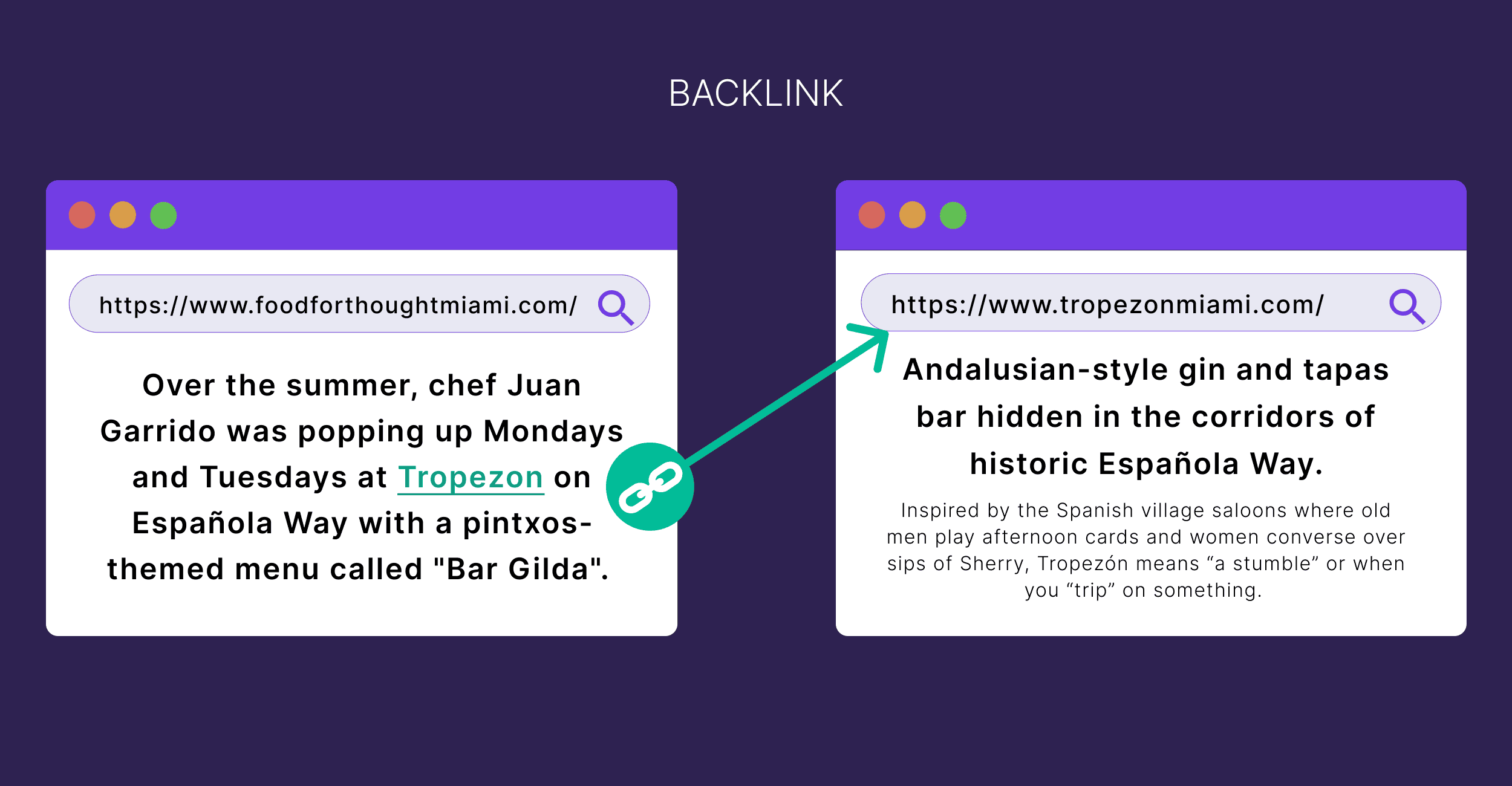
Focus on creating link-worthy content that naturally attracts high-quality backlinks.
Like:
- Stats pages that aggregate valuable industry data
- Original research and unique data
- Comprehensive, in-depth guides
- Interviews with or guest posts from industry experts
- Visually appealing content like infographics and videos
At Backlinko, our stats pages attract a lot of backlinks.
Our data shows that 32% of our high-quality backlinks point to our stats pages. Even though they represent only 16% of our overall content.
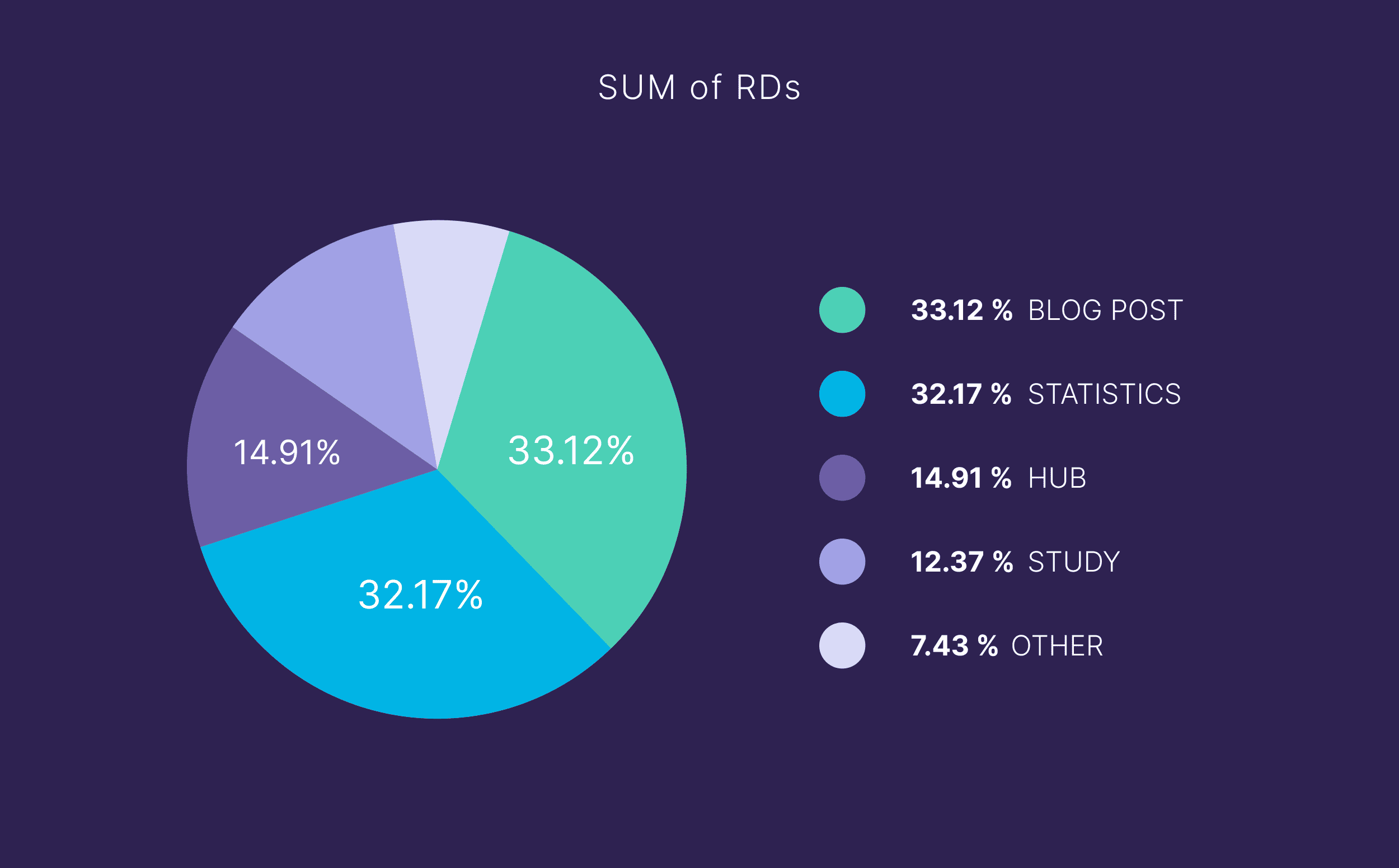
It pays to focus on earning backlinks organically.
They boost your website’s authority in the eyes of search engines and users alike.
#3: Social Media Marketing
With social media, you can build brand awareness, engage your audience, and attract traffic to your website.
But most importantly, your content can lead to sales.
For instance, Miss Excel’s online training generates $2 million per year.
Her main source of clients?
Inbound marketing on TikTok! She dances and shares Excel formulas on the platform.
Like this:
@miss.excelOneNote 🤝Outlook♬ Big Energy x Fantasy Latto x Mariah – Joy Z.
But how does she make money with these videos?
Her content got her an audience on TikTok. They wanted to learn more from her about Excel. So, she created courses.
Now her videos act as a natural point of connection for people interested in learning more about Excel.
Pro tip: Use our Social Media Strategy Template to get your business social.
#4: Email Marketing
Email campaigns can be inbound or outbound.
How to tell the difference?
Inbound email marketing is defined by user interest.
The subscribers are there voluntarily. They signed up either for the subscription directly or gave their email address in trade for access to one of those gated content pieces we described earlier.
Use inbound email marketing to nurture leads, build relationships, and drive conversions.
For example, tom’s guide.
When you visit the website, a pop-up form prompts you to join the email list.

Tom’s guide subscribers value the industry news, product reviews, tech tips, and exclusive deals they get in their inbox.
That value starts right away, too.
Immediately after opting in, tom’s guide subscribers receive a warm welcome email thanking them for signing up.
The welcome email also showcases some of tom’s guide’s top-rated articles, enticing readers to explore their content right away.

The company now has a chance to nurture their relationship with the subscriber. They got a lead.
They’ll send emails about Google Maps’ recent upgrade:
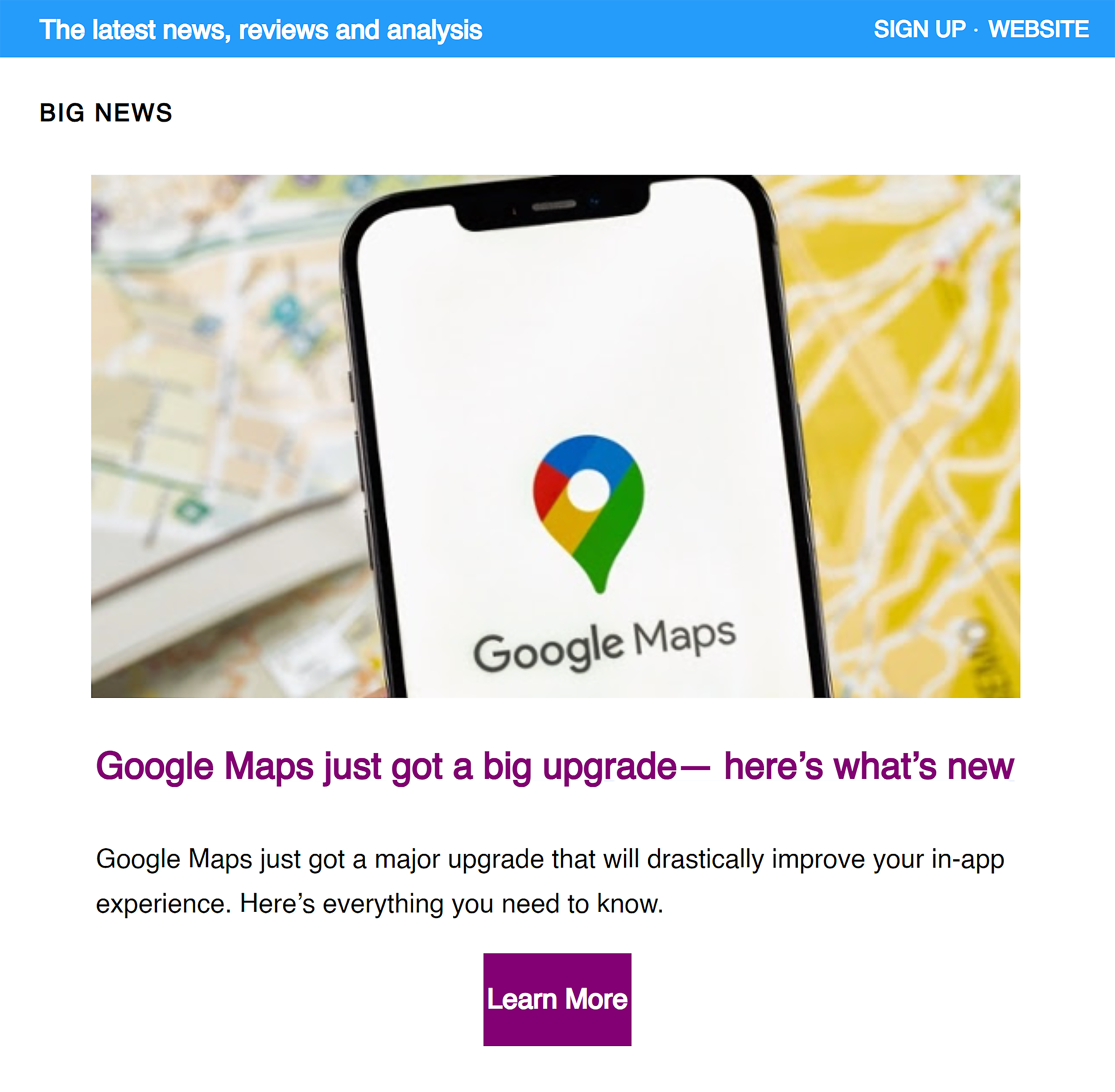
They’ll send product recommendations complete with affiliate links.

Over time, the company builds trust by providing content people actually enjoy and find useful.
On the other hand, outbound marketing emails are purely focused on sales.
They don’t necessarily rely on users’ interest or even consent.
To reach more people faster, a company may buy a list of email addresses to reach people who vaguely fit their customer profile.
It’s a lower-precision, higher-volume strategy.
Further reading: How to Write an AWESOME Email Newsletter
Real-World Inbound Marketing Success Stories
Let’s take a look at a couple more real-world examples.
These are brands that have successfully used inbound marketing to grow their businesses:
1. Casper
Casper, a mattress company, has a great inbound marketing strategy.
They create playful content to educate consumers about sleep health. That includes blog posts, social media, and email marketing.
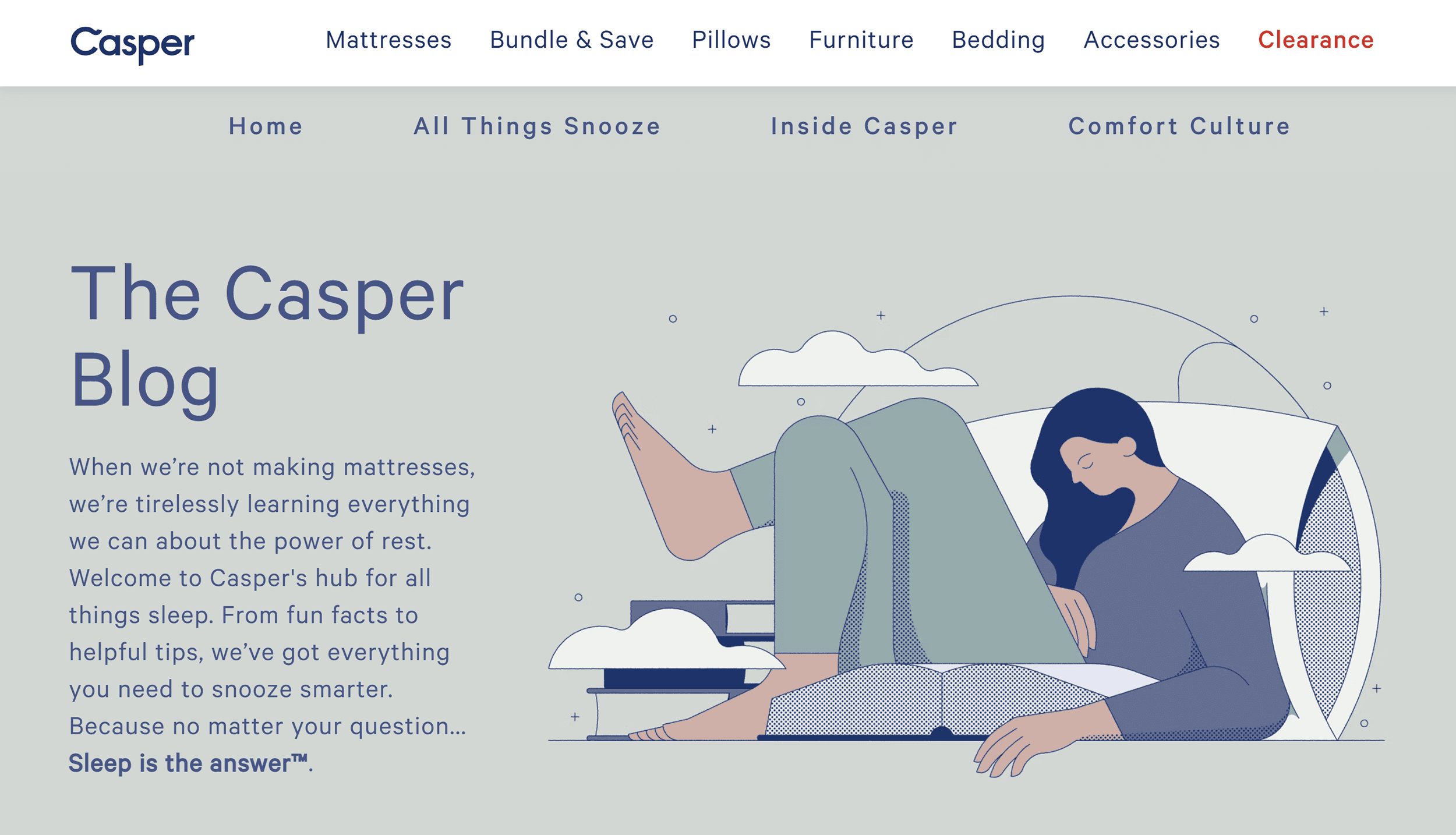
For instance, they share tips on how to choose the right mattress.
They describe the benefits of sleeping next to someone.
It looks like this:
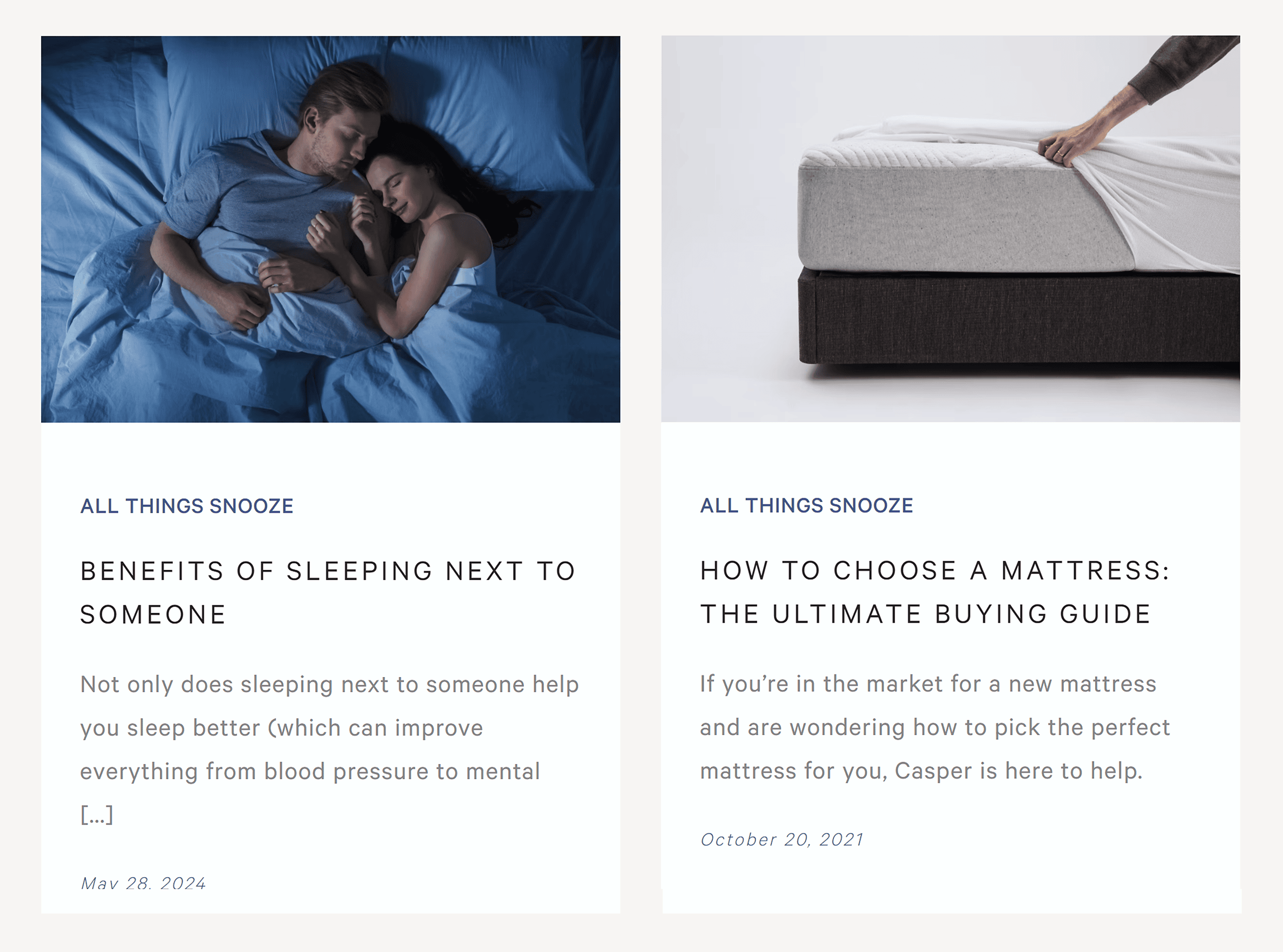
But what do these blog posts lead to?
Casper gets a massive chunk of traffic from organic search.
It’s their second-largest traffic source after direct traffic.

And it doesn’t end there.
Over 1% of website visitors make a purchase.
That might sound small, but at their volume, those are big numbers.
In the last year, roughly 92,660 of the users who landed on the website through organic search bought one of Casper’s products.

2. Babish
In 2016, Andrew Rea started a YouTube channel sharing pop culture-inspired cooking videos.
He was recreating iconic dishes like “Ratatouille.”
His channel has significantly expanded. Today, it has over 10 million subscribers.

What started as a simple channel is now Babish Culinary Universe (BCU).
Babish offers a website with written recipes, too.
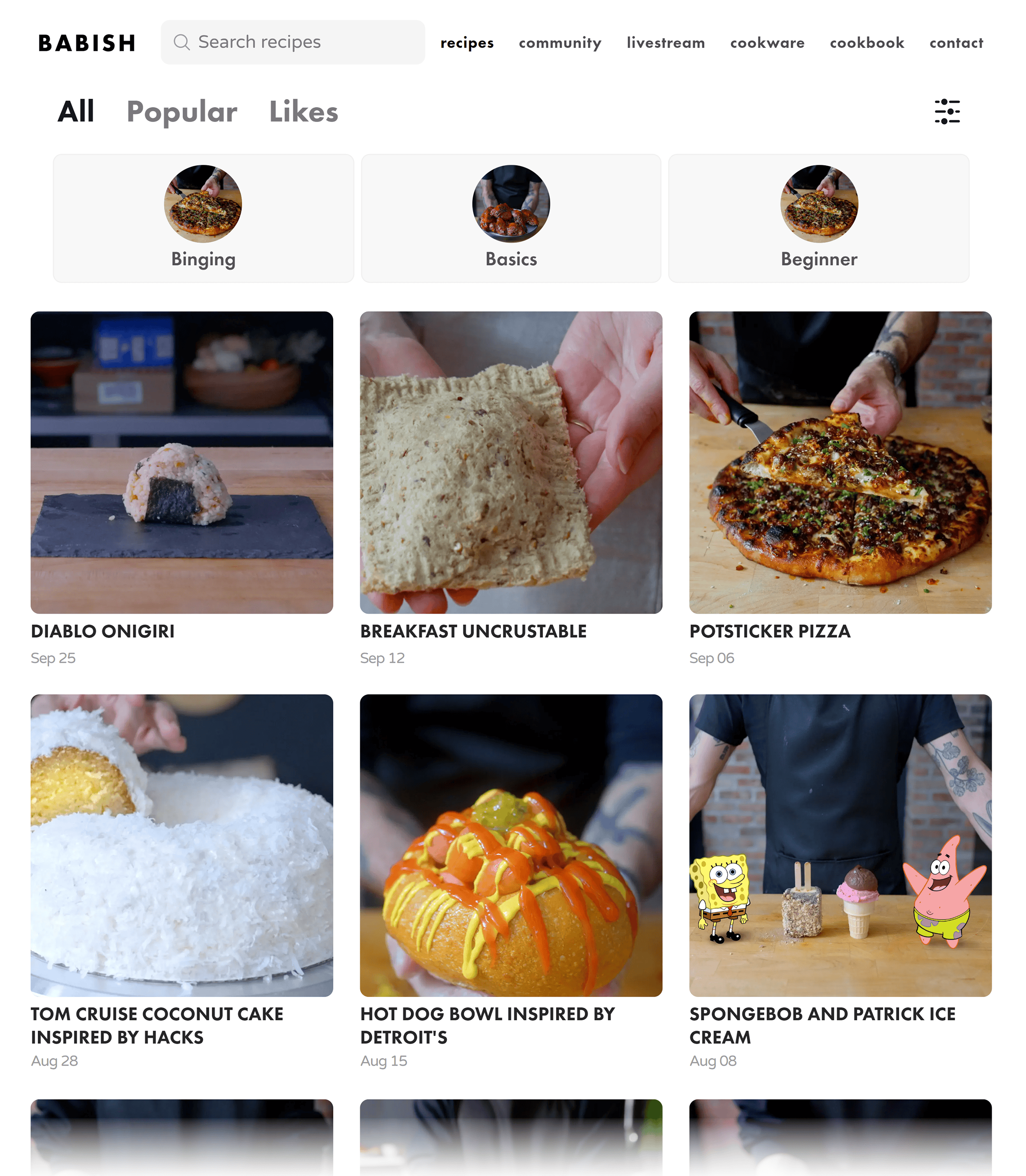
The site attracts more than 442k visitors per month.
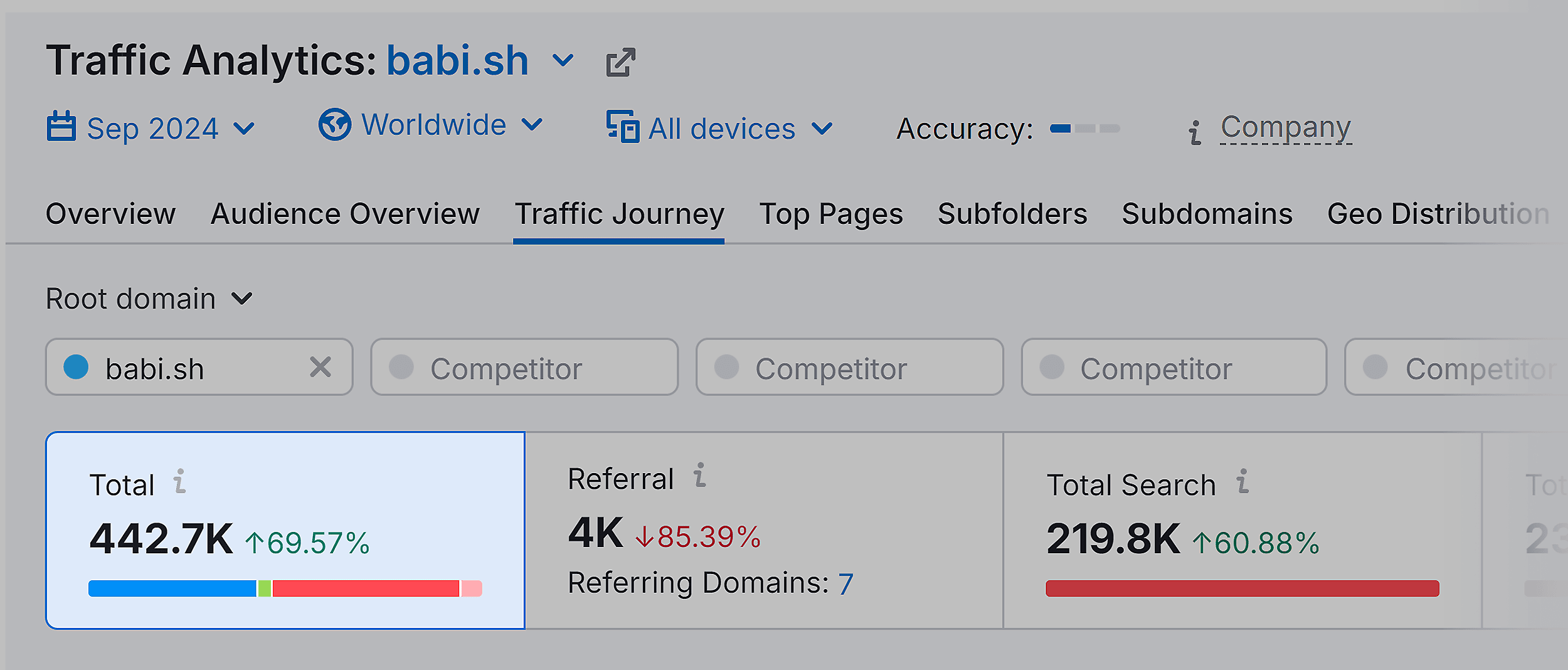
Babish also offers a paid membership that gets subscribers exclusive access to recipes and a cooking community.
The company’s success relies on a strong inbound marketing strategy.
Babish is an established membership website, so 48% of its monthly traffic comes from direct visits.
You can see: Inbound marketing cultivated a loyal customer base.
However, Babish also attracts a significant number of users through:
- Organic search: 219,800 users
- Organic social: 23,400 users

3. Pointe Pest Control
In 2019, Pointe Pest Control was paying $104 per lead.
Back then, their strategy relied heavily on paid advertising. Specifically, it used pay-per-click (PPC) advertising.
Recognizing that the cost per lead was unsustainable, the company decided to make a shift.
The marketers incorporated an inbound strategy into their mix.
They started by creating valuable, search-optimized content aligned with their customers’ needs.
They wrote blogs about pests to expect in late summer. And gave advice about how to avoid pantry pests.
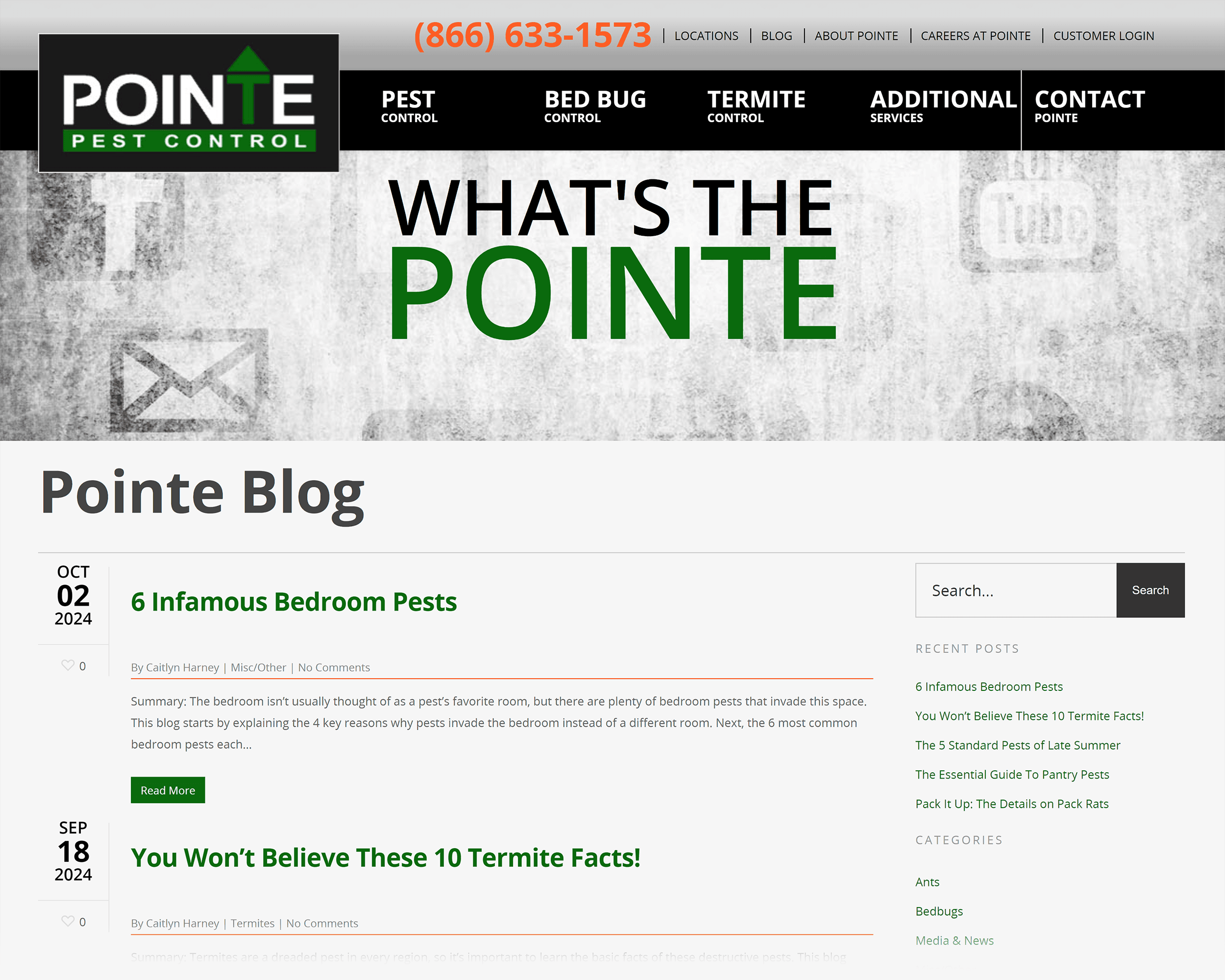
In 2020, Pointe started to attract a significant amount of traffic from organic search.

This shift helped Pointe attract more qualified leads.
And it drastically cut marketing costs.
The business went from paying $104 to just $10 per lead.
How?
This content attracted an audience that wasn’t just casually browsing the internet.
They were actively searching for ways to solve pest problems.
They already had an issue and were looking for solutions.
They were ready to buy.
And when these visitors realized they needed professional help, they could easily sign up for Pointe’s services.
Ready to Add Inbound Marketing to Your Strategy?
Inbound marketing can be an efficient, sustainable way to grow your business.
And it works for businesses of all sizes, industries of all types, and whether your business is new or long-established.
The trick? You’ll need to create valuable, high-quality content.
A lot of it.
Ready to get started? Read our guide on how to scale your content production without sacrificing quality.
The post Inbound Marketing: Benefits, Strategies, and Examples appeared first on Backlinko.
این خبر را در ایران وب سازان مرجع وب و فناوری دنبال کنید
جهت دانلود و یا توضیحات بیشتر اینجا را کلیک نمایید

